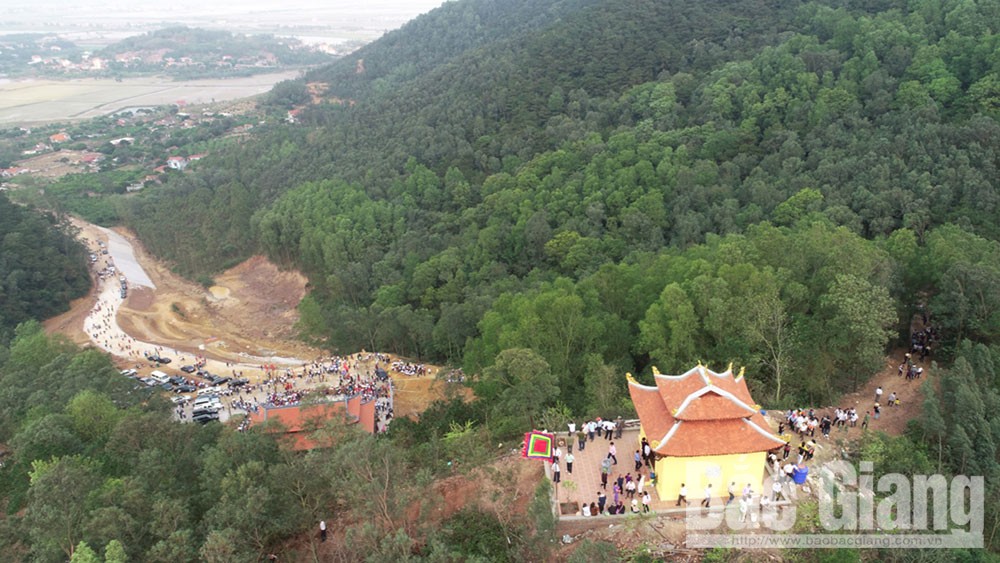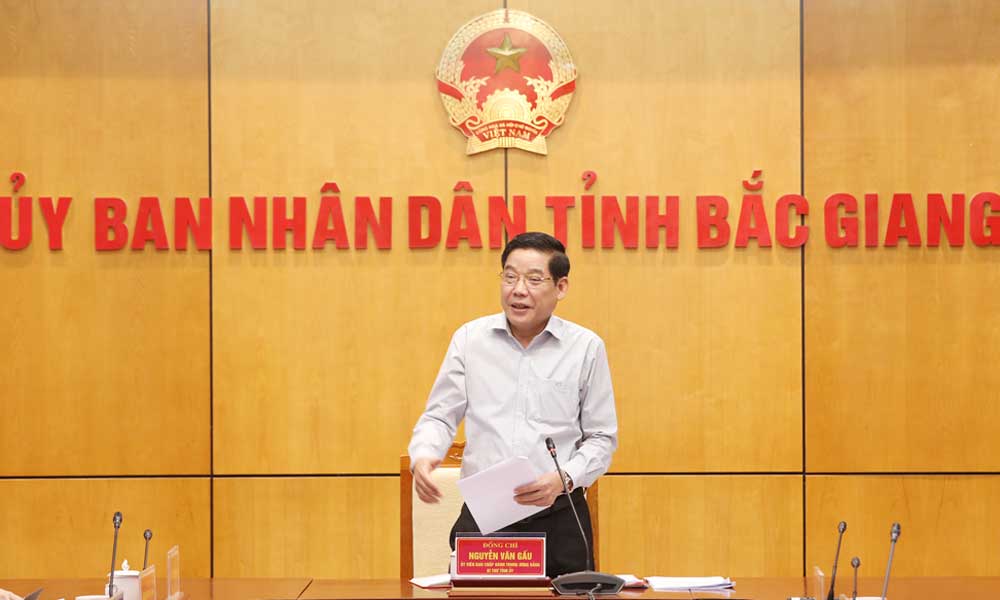Than Nong Temple stands next to Huyen Dinh mountain range
The two-storey temple has five compartments, with two small rooms in both sides, and eight curved knife-shaped roofs. On top of the roofs are two dragons looking towards the sun. The temple follows the traditional architecture made of Lauan meranti wood. The roofs are propped up by six rows of columns with carved patterns. The parthouse runs around the temple, which is surrounded by wooden frames instead of walls.
 |
|
Than Nong Temple Festival. |
The three middle compartments have their doors carved beautifully. The background is covered by blue stones. Connecting the columns in the parthouse are stone molds carved with beautiful patterns. The entire temple was built by craftsmen in Dan Phuong, an outlying district of Hanoi.
The temple was completed in 2018 and inaugurated at the beginning of 2019. Its construction was funded by social sources, with the Luc Nam district People's Committee as the investor.
Associated with Than Nong Temple, behind Huyen Dinh mountain range are mountains featuring three rice heaps, a man and Thuan’s plowing row, and related legends. This is considered a region with unique culture and beliefs.
The one worshipped at the temple was Emperor Shennong. According to the book "Dai Viet su ky toan thu" (The Complete Annals of Dai Viet), Chinese legend has it that Shennong is one of the five ancient emperors who taught people how to plow and cultivate. He was also called the Emperor of the Five Grains.
In Vietnam, Emperor Shennong is worshipped in many places, including the Kinh Bac region. Every year, in addition to the main ceremony, when villagers finish rice growing and harvesting, or welcome the new rice season, they prepare offerings at the communal house to worship the gods, including Than Nong on these three occasions. Each occasion has its own prayers.
The plowing ceremony takes place on the first day of the third lunar month. After harvesting rice, on the first day of the eight lunar month, the villagers prepare offerings for the worshipping ceremony. And on the first day of the ninth lunar month, when the new rice season comes, another ceremony is held. The customs seemed to originate from historical reality that the farming here developed quite early and has been preserved to date.
|
Than Nong Temple Festival in Ho My, Cam Ly commune was first held on the 16th day of the first lunar month of the Year of the Pig, coinciding with the inauguration of the temple. Despite being a new festival, it was organised solemnly with full of traditional rituals of a festival. |
All prayers mention Emperor Shennong as the first to teach people how to transform wild rice into cultivated rice to feed them. Not only that, he also showed people how to cultivate and take care of crops. The villagers believe that if they do so, the crops will develop well and they will have much rice and vegetables for a wealthy life.
Than Nong Temple Festival in Ho My village, Cam Ly commune was first held on the 16th day of the first lunar month of the Year of the Pig, coinciding with the inauguration of the temple. Despite being a new festival, it was organised solemnly with full of traditional rituals of a festival.
If the locality continues to invest in facilities at the temple and well organise Than Nong Temple Festival in Ho My village, this will be an attractive destination for travellers who wish to study their roots and explore Tay Yen Tu mountain region whenever the Spring comes.
Nguyen Xuan Can
 Bắc giang
Bắc giang















Reader's comments (0)